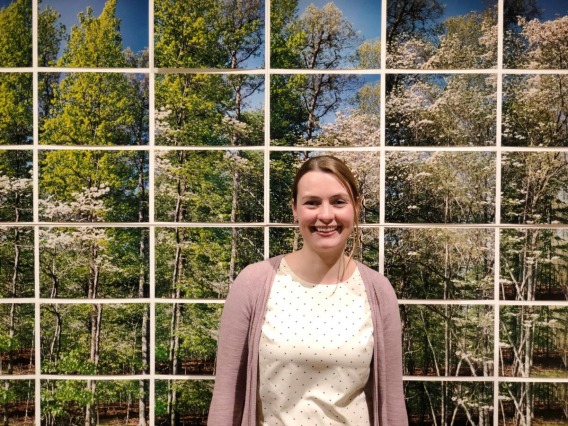
An estimated 250 million roses are given each Valentine’s Day. But in a cultural context, that classic symbol of love reveals even more about the relationship between people and plants.
Humanity is dependent on plants for survival, but scholars have recently begun turning their attention to the myriad ways in which plants also impact human cultures.
Similar to research that established the field of animal studies in the past few decades, a body of scholarship is growing in literary and cultural plant studies, ranging from inquiries into the gendered nature of flower discourses to the investigation of the sociality of forests, says Joela Jacobs, Assistant Professor of German Studies at the University of Arizona. Particularly in the context of environmental humanities, these approaches offer valuable insights into human relationships with nonhuman life.
“Plants have traditionally been reduced to the role of passive bystander, ornamental backdrop, or mere symbol,” Jacobs says. “But they have an agency and an impact of their own. People are dependent on plants for our survival, but they’re also central to the cultural imagination.”
In 2016, Jacobs founded the Literary and Cultural Plant Studies Network, an international group of scholars collaborating around that theme. Since that point, the interdisciplinary network has produced research on environmental humanities, posthumanism, traditional philology, eco-criticism, language philosophy, cultural as well as queer and gender studies.
“The scope of it has blown our minds,” says Jacobs, who is also organizing the network’s first conference, with colleagues in Germany and Austria, taking place June 2019 in Dresden. “Everything is plants.”
On campus, Jacobs has collaborated with University of Arizona Museum of Art curator Olivia Miller and Professor Ursula Schuch from the School of Plant Sciences on the exhibit Botanical Relations, on display from Jan. 26 to March 31. Jacobs will present an opening talk at the museum on Feb. 14, at 4 p.m.
Vegetal Eroticism: Imagining Our Botanical Relations will draw on Jacobs’ recent and forthcoming articles that engage with plants, on topics such as “Crimes Against Nature,” “Plant Parenthood,” “Eden’s Heirs,” and “Phytopoetics.”
On the topic of vegetal eroticism, Jacobs says the sensuality of plants in the art nouveau movement and scientific discoveries like Darwin’s sparked a backlash and in the early 1900s, worry spread in Europe that children would learn too much about sexuality from plants and through biology classes.
“Plants are so beautiful, in their smells, in their colors. They’re meant to attract pollinators,” Jacobs says. “But people were getting worried about vegetal eroticism, so they censored it in literature, they censored it in school curriculum. They thrust human conceptions of morality onto the plant world. Nature, absurdly, was called ‘unnatural.’”
For thousands of years, artists have turned to nature for inspiration, says Olivia Miller, Curator of Exhibitions at the UA Museum of Art. The exhibit features some works that are meticulous scientific renderings, while others comment on larger social and political issues.
“I have been itching to do an exhibition on botanicals for a few years, but I wanted it to be more than a show that focused on the aesthetics of plants—to do that I needed to wait until I connected with the right people,” Miller says. “I love having the opportunity to learn from others and the exhibitions are always richer when created through multiple perspectives.”
There’s no end to the cultural traditions that draw on plants, as medicine, as agriculture, as toxins. People engage with plants in gardens. We turn plants into products. We collect, preserve and live with plants.
“In the Judeo-Christian tradition, we start with a tree in the Garden of Eden,” Jacobs says. “All these cultural traditions have plants at their center.”
In language, from Shakespeare’s “rose by any other name,” to the innuendo of “deflower,” so much can be conveyed by relying on just a single type of plant.
“There are all these metaphors in poetry of flowers,” she says. “There’s a certain code. People speak in the language of flowers of things that they don’t want to say directly.”
The influence between plants and humans is often a two-way street, as described in author Michael Pollan’s 2001 bestseller Botany of Desire.
“One thing that interests me is the question of whether we attribute agency to plants. In western tradition, plants are considered passive. But plants colonize us. They make us change our behavior,” Jacobs says. “I’m interested in ways that plants function to shape how human culture behaves. Plants can shift entirely how a society functions.”
In the face of global climate change, human challenges in the future are intricately related to plants, particularly as the environment around us changes.
“What’s also changing is so much research coming out of plant sciences. They’ve found that plants can hear, communicate and other things like that,” Jacobs says. “That impacts how we think about nature around us, and the way we’re looking at plants is shifting.”
The exhibit, drawn from UAMA’s permanent collection, includes work from artistic icons like Georgia O’Keeffe, Andy Warhol and Pierre Auguste Renoir, along with local artist Barbara Rogers, who will deliver an artist talk on March 31 to close the exhibit. A showcase of the vegetal world, explored from three different disciplinary perspectives, the exhibit and events are co-sponsored by a College of Humanities Faculty Research grant.
The works of Botanical Relations are organized into four sections: Dis/Order, Individuality, Violence and Eroticism. This presentation asks the viewer to consider the works from a new perspective. For example, Renoir’s 1900 painting Roses Dan Un Vase, is in the Violence section of the exhibit.
“They’re dying,” Jacobs says. “They’re death ornaments in a sense, but in painting these particular roses, they have also been preserved in immortality.”

